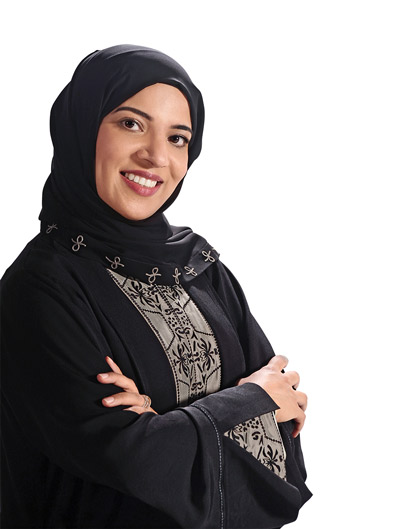The state of smart cities in MENA
11 December 2025
Published online 30 July 2018
Habiba Al Safar and Guan K Tay discuss the rising tide of precision medicine in the Middle East and how the West can be used as a model.

The approach, also known as personalized medicine, encompasses all stages of care, including diagnosis, treatment and follow-up, and aims to provide the patient with the right drug at the right dose at the right time, using a combination of pharmacology and genomics.
We’ve come a long way in genomics. The first human genome project was completed by a collaborative international effort in 13 years, and is still regarded as the most expensive experiment in biology. Over the years, however, sequencing technologies have significantly evolved1. Traditional Sanger Sequencing platforms have been replaced by a range of Next Generation Sequencing (NGS) technologies, which have been consistently breaking down the cost of whole genome sequencing to less than $1,000, and completion time to weeks.
The bottleneck in genome research now, is our ability to analyze and make sense of the data.
Reference DNA sequences have been compiled by a number of populations2 and have ushered in a new wave of services such as Direct To Consumer (or DTC) DNA-based services, now predominantly used for ancestry analyses. Thanks to these services, the expanding databases are providing opportunities to mine data about what predisposes humans to disease.
A number of countries in the Gulf Cooperative Council (GCC) are seeking to diversify their economies by shifting from dependence on oil and investing more heavily in health projects.
In the Middle East, the genome era is slowly but most certainly gaining momentum with the emergence of several national genome projects in Saudi Arabia, Qatar, Kuwait and the United Arab Emirates3,4,5,6,7.
There is little doubt that DNA testing will continue to contribute to preventative strategies in the health sector. Although predictive tests for complex multifactorial diseases such as diabetes and cardiovascular disease require more effort, there is evidence that genetic screening is already being used as a pre-emptive measure to provide alternatives to patients predisposed to particular diseases. Currently, genetic testing is available for many single-gene disorders such as Huntington’s disease, cystic fibrosis, and sickle cell anemia8,9,10.
For these preventive strategies to find footing in the Middle East, collaborative efforts are needed to boost the availability of genomic data on Arabian populations.
In 2017, Popejoy and Fullerton11, after completing an extensive audit of public domain databases, concluded that the Arab genome is woefully under represented. Only 0.08% is from people of Arabian ancestry
Precision medicine is still its infancy in the Middle East, but clearly, the region can take note of the international research pointing to the economic and personal benefits of genetic screening.
QALY and ICER are two parameters that are used together to measure the magnitude of improvements in the quality of life brought by a specific intervention, in addition to its cost. QALY, short for quality-adjusted life-year, is a variable that measures disease burden and takes into account the quality and the length of a patient’s life. ICER, or incremental cost-effectiveness ratio, is a statistic used to summarise the cost-effectiveness of a health care intervention.
Studies assessing genetic testing for diseases like type 2 diabetes, in addition to simulation models of the disease’s complications under a genetic testing policy versus no policy yielded average gains in both QALY and ICER12,13.
"Collaborative strategies must be a priority."
Additional successful examples include experiments related to neonatal diabetes, diagnosed before six months of age. In these experiments, genetic testing of diabetic patients with pathogenic variants in the two genes KCNJ11 and ABCC8 was projected to bring about quality-of-life benefits that enlarged over time14.
As well, a review between 2002 and 2015 of seven economic evaluations showed the cost effectiveness of screening based on genetic testing of patients with confirmed clinical or genetic diagnosis of Familial Hypercholesterolemia (FH) –– a genetic disorder that leads to elevated plasma LDL-cholesterol levels and premature coronary heart disease15.
A 2010 study also showed that genetic screening for Lynch syndrome, a genetic predisposition to colorectal cancer, in newly diagnosed colorectal tumors had saved more than $45,000 per life-year16.
Similarly, genetic testing for mutations in the tumor suppressant gene BRCA was proved to reduce cancer-related morbidity if clinical recommendations for intervention are adopted. Screening of BRCA1 and BRCA2 variants delayed the onset of breast and ovarian cancers in at risk individuals who underwent genetic testing17,18.
Studies have also concluded that having genetic information readily available in the clinical health records allows precise delivery of pharmaceutical treatments19.
Although QALY and ICER data for major disorders like diabetes, cardiovascular disease, and cancer in Middle Eastern countries is not freely available, the international experience particularly from Europe and the United States can be used as a guide.
These studies show savings of thousands to hundreds of thousands of dollars in costs if strategic nationwide genetic screening programs are implemented.
Any proposed genetic program established in the region should include an interim period to evaluate the cost effectiveness of such programs.
Most importantly, due to the relatively small populations of Arab nations, combined with the ethnic diversity across the region, collaborative strategies must be a priority.
Linkages will also have to stretch from physicians at the frontline, the first port of call for most patients, to the policy-makers in health departments, who are empowered to drive community-wide prevention programs.
It is only via the coordinated efforts of these integrated systems throughout the region that patients will ultimately be provided with the information that would enable them, and their care providers, to make informed decisions on their health and wellbeing.
Habiba Al Safar is the director of of the Centre of Biotechnology and an associate professor of biomedical engineering at Khalifa University of Science and Technology, Abu Dhabi, United Arab Emirates. Guan K Tay is an associate professor of biomedical engineering at Khalifa University of Science and Technology.
doi:10.1038/nmiddleeast.2018.87
Stay connected: